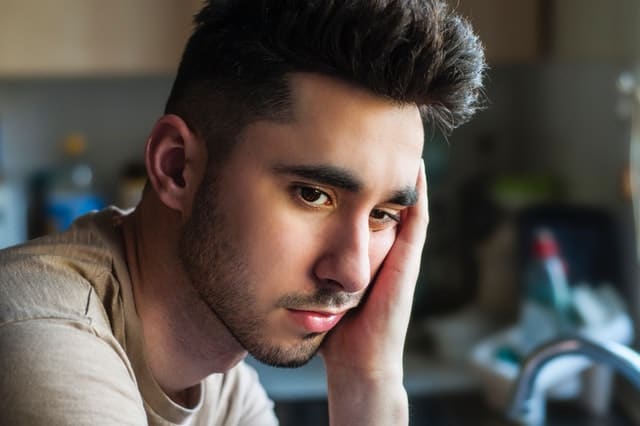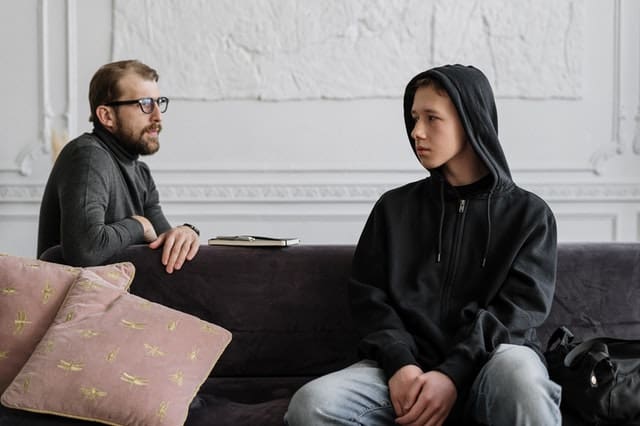Teenagers have got it all going on, and then some… Growing up in the twenty-first century presents many youngsters with daily challenges and pressures not seen before, and the vast majority of these are the result of social media’s impact on the way teenagers and other adolescents communicate and interact with their friends, their peers, and, in this period of coronavirus, lockdowns, and social distancing, their extended families and even their high school teachers.
“It is a stressful and uncertain time, and most people have not experienced anything like it.” – Benton County, WA, Coroner Bill Leach
The world, as we know and they know it, is changing fast too. Visual interactions like simply smiling at each other are often hidden behind a protective mask when you do get to actually step outside the front door of the fortress your home has become. Here in Washington state, the Benson County coroner recently reported an unparalleled surge in the number of suicides taking place in his area. Sadly, however, this is hardly surprising as Washington state has always been ranked one of the worst states in the entire nation for its residents’ mental health, adults and youngsters alike. Evan Beales, the admissions director at Northpoint Recovery, our sister substance abuse treatment center in Boise, Idaho, recently said in a CBS interview, “We’re seeing an increase in the number of suicides and of people falling into relapse.” Identifying loneliness and ensuing depression as a principal cause, he added, “When a person feels like that, their chances of relapsing are higher and that’s what we’re seeing.” Every year across the U.S., the month of May becomes “Mental Health Awareness Month,” organized by Mental Health America (MHA), who are focusing this year’s campaign on the impact of COVID-19 upon everybody’s mental wellbeing – teenagers included.

Teenage Depression Continues to Rise in Washington State
Apart from organizing “Mental Health Awareness Month” every year, Mental Health America also publishes its annual report on youth depression statistics. Its 2018 survey revealed that 12.54% of Washington state’s teenagers and young adults suffer from major depression – that’s a deeply concerning ratio of 1 in 8, and the concern doesn’t stop there. As this percentage figure continues to rise, the report also concluded that 62.5% of young people with major depression do not receive any mental health services whatsoever – meaning a staggering 6 out of 10 WA teenagers (an age where they are most at risk from thoughts of suicide, with difficulties in both school and relationships) are not receiving the care, support and treatment they clearly need. Here’s something maybe you didn’t know… The laws in Washington state allowed those over age 13 to refuse mental healthcare, meaning parents couldn’t even make an appointment with a mental health professional unless their teenager agreed to it, regardless of whether the child urgently needed assessment and treatment. As parents of teenagers are well aware, while they, as adults, can visualize the consequences of their actions, both good and bad, teenagers are far more impulsive and often act against their own interests – they are far more focused on here-and-now responses. However, new legislation is on the horizon – a recent 2019 bill now provides parents the right to make a professional evaluation for teenage outpatient and residential treatment, as well as other forms of mental healthcare as needed. Thankfully.

Major Depressive Disorder: Definition, Symptoms & Treatment
Severe depression is known clinically as major depressive disorder (MDD). Although times of sadness are an accepted part of the human experience, normally and naturally caused by bereavement, illness, or ending relationships, they are usually just short periods in our lives. However, sometimes these feelings and emotions persist and even become more intense over time, which can lead to an MDD diagnosis, also sometimes called clinical depression. For a teenager, already under social, family, and academic pressures, it can be too much, and some feel the only way out of this situation is suicide. Many will also reason (wrongly) that relapse will provide an escape from these depressed emotions.
Symptoms of Major Depressive Disorder (MDD)
To meet the diagnosis criteria of MDD, as described in the Diagnostic and Statistical Manual of Mental Disorders (DSM-5), an individual must experience 5 or more symptoms, at least once a day, and for a 2-week timeframe. Symptoms include:
- Sad or irritable most of the day, nearly every day
- Difficulty concentrating, thinking, or making decisions
- Thinking about self-harming or committing suicide
Genetics, stress, changes in hormone levels (normal for teenagers), untreated substance abuse (known as dual diagnosis), severe illness, eg. cancer, and certain medications can also trigger MDD.
MDD Treatment
The treatment for MDD is typically a combination of medication (antidepressants on prescription) – and psychotherapy, with the addition of other complementing therapies and a number of recommended lifestyle adjustments. However, for those with severe MDD, especially those with self-harming or suicidal thoughts, a hospital stay is usually insisted upon.
Medication
- Selective serotonin reuptake inhibitors (SSRIs): the most commonly prescribed, and work by inhibiting the breakdown of the neurotransmitter serotonin in the brain. Examples include fluoxetine (Prozac) and citalopram (Celexa).
- Other medications include tricyclic antidepressants (TCAs) and atypical antidepressants, although these can cause several side effects, eg. weight gain and drowsiness.
Psychotherapy
Psychotherapy, also known as psychological therapy or talk therapy, is an effective way to talk through your emotions with a professional therapist on a regular basis.
Additional Therapies
- Attachment-Based Family Therapy (ABFT)
- Cognitive Behavioral Therapy (CBT)
- Dialectical Behavioral Therapy (DBT)
- Experiential Therapies – Art, music and equine
Lifestyle Changes
- Eating a balanced diet
- Avoiding alcohol and certain processed foods
- Getting plenty of exercise
- Sleeping well

The Social Effects of COVID-19 on WA Teenagers
With lockdown restrictions now easing across the U.S. and in Washington state – some businesses reopening, small gatherings permitted, and so on – you may believe that the rising rates in both suicide and relapse will start to fall. Initially, that may well be the case, as our lives begin to look normal again, and social interactions begin to happen face-to-face. However, that’s only applicable in part to our teenagers, who now face an even more uncertain future. According to the International Labour Organisation (ILO), a United Nations agency, young people are being disproportionately affected by COVID-19, and risk being scarred throughout their working lives. The ILO’s report calls these young people the “lockdown generation,” and says that young people have been affected by “a triple shock“:
- Destroying their employment
- Disrupting education and training, and
- Severe problems for those who want to start work or change jobs
Here in Washington state, on April 6th., Gov. Jay Inslee announced that WA schools would remain closed for the remainder of the 2019-20 academic year, prohibiting in-person teaching until at least June 19. Currently, the state’s Office of Superintendent of Public Instruction is continuing discussions about how schools could reopen under strict guidelines this fall, with an announcement due next month. This leaves WA’s teenagers getting their education, their teenage social life, and their mental health and addiction support and treatment from exactly the same computer screen, day after day. Teenage suicide can be prevented.
National Suicide Prevention Helpline:1-800-273-8255




